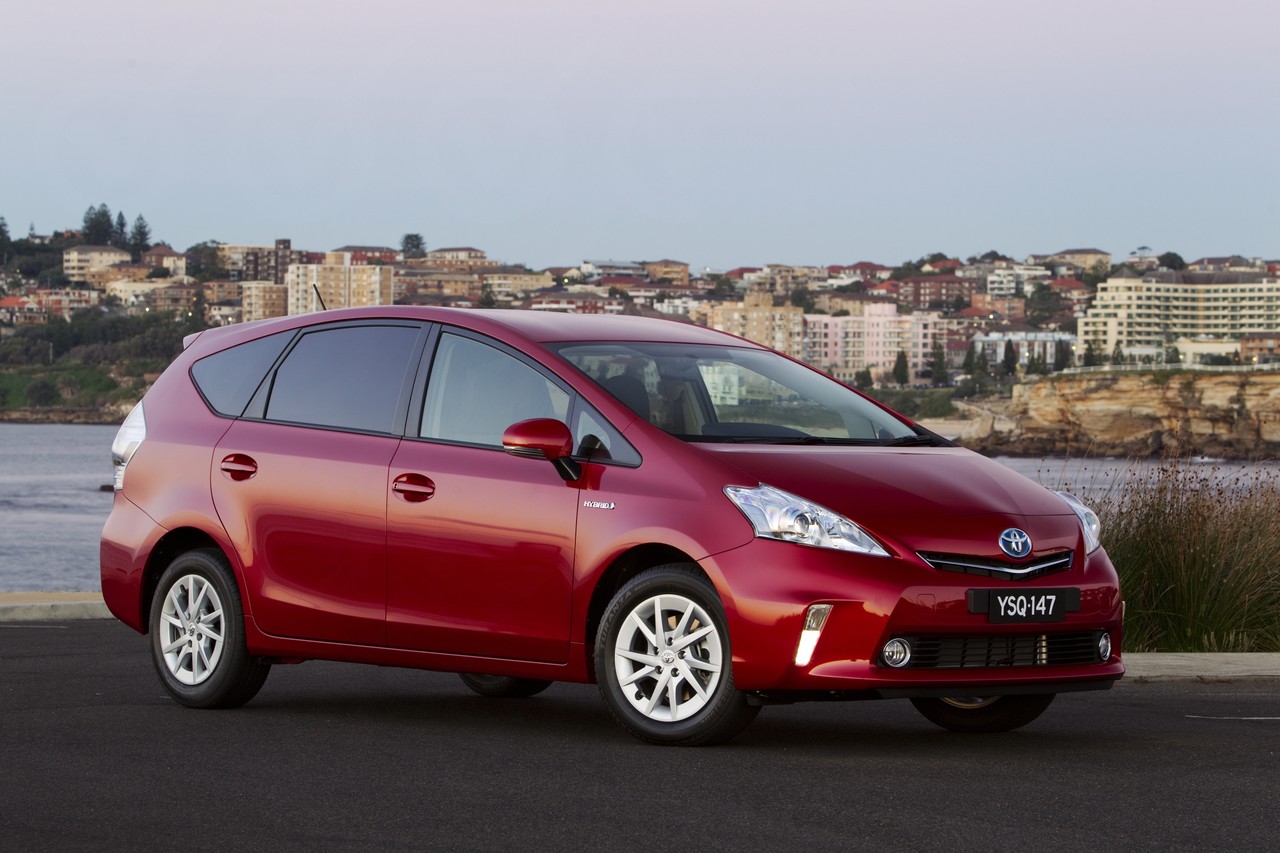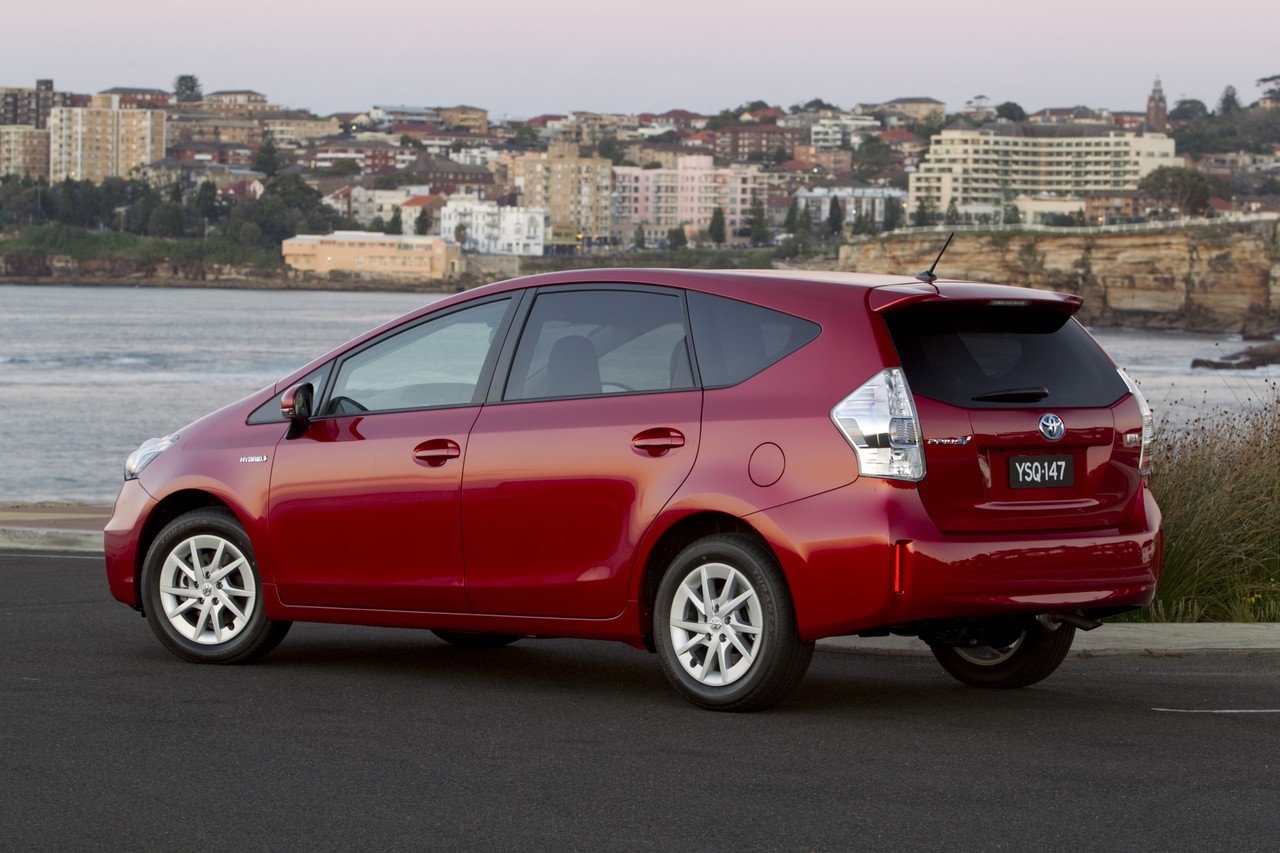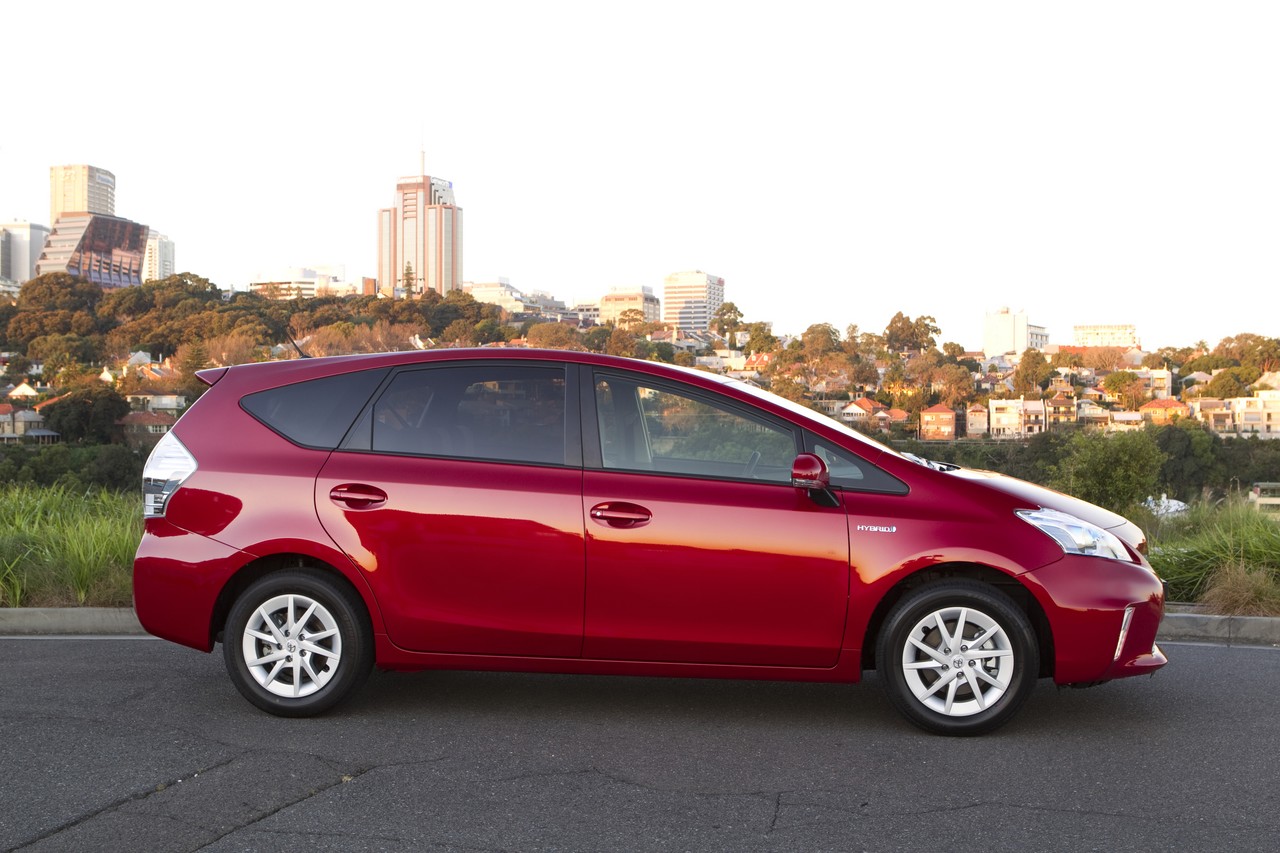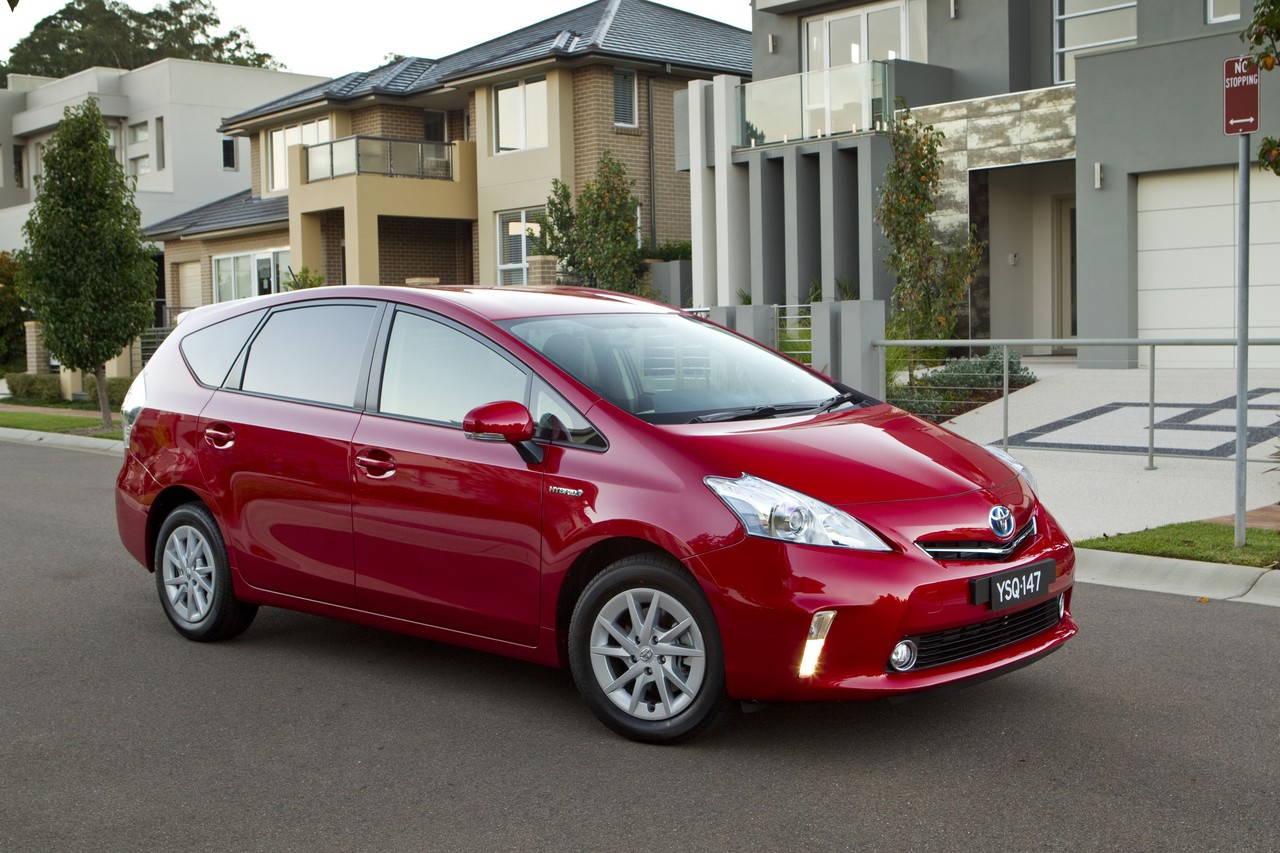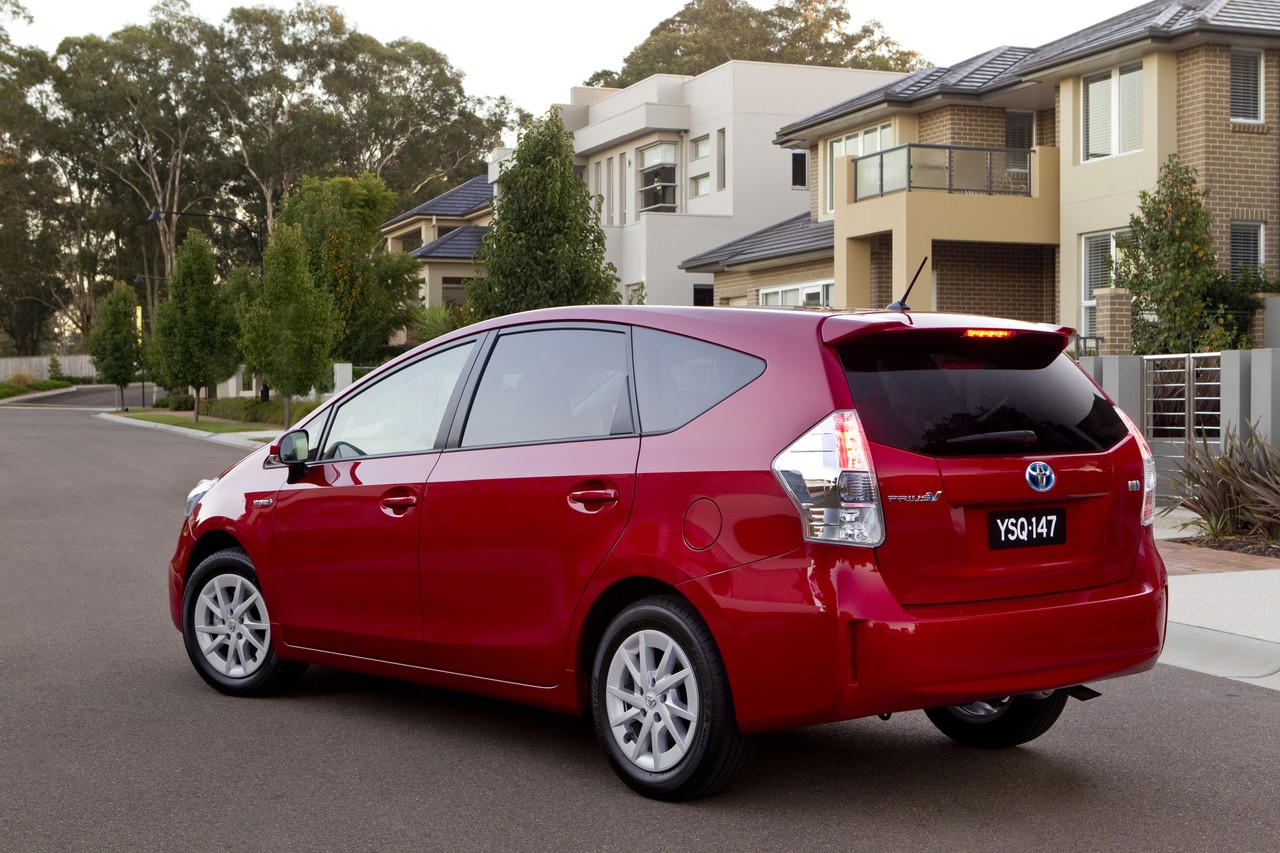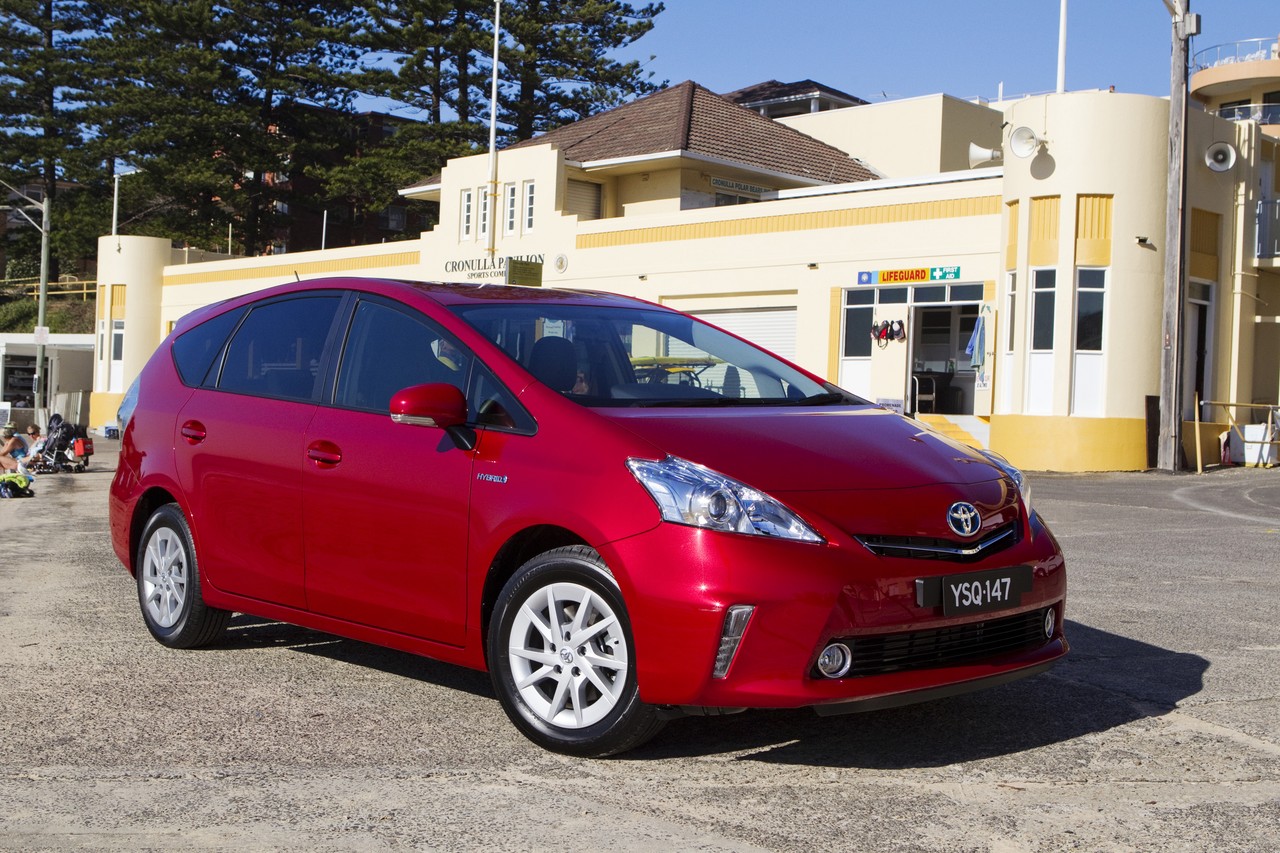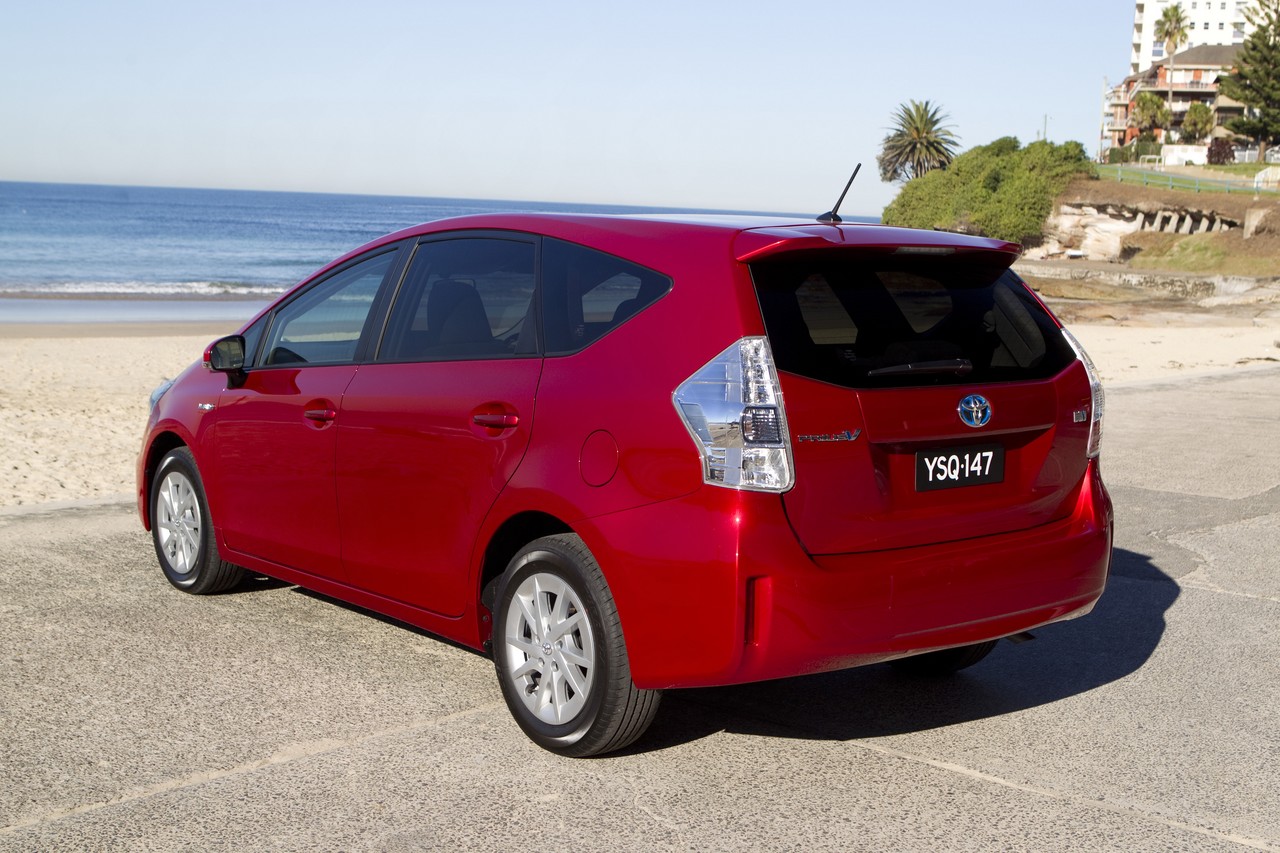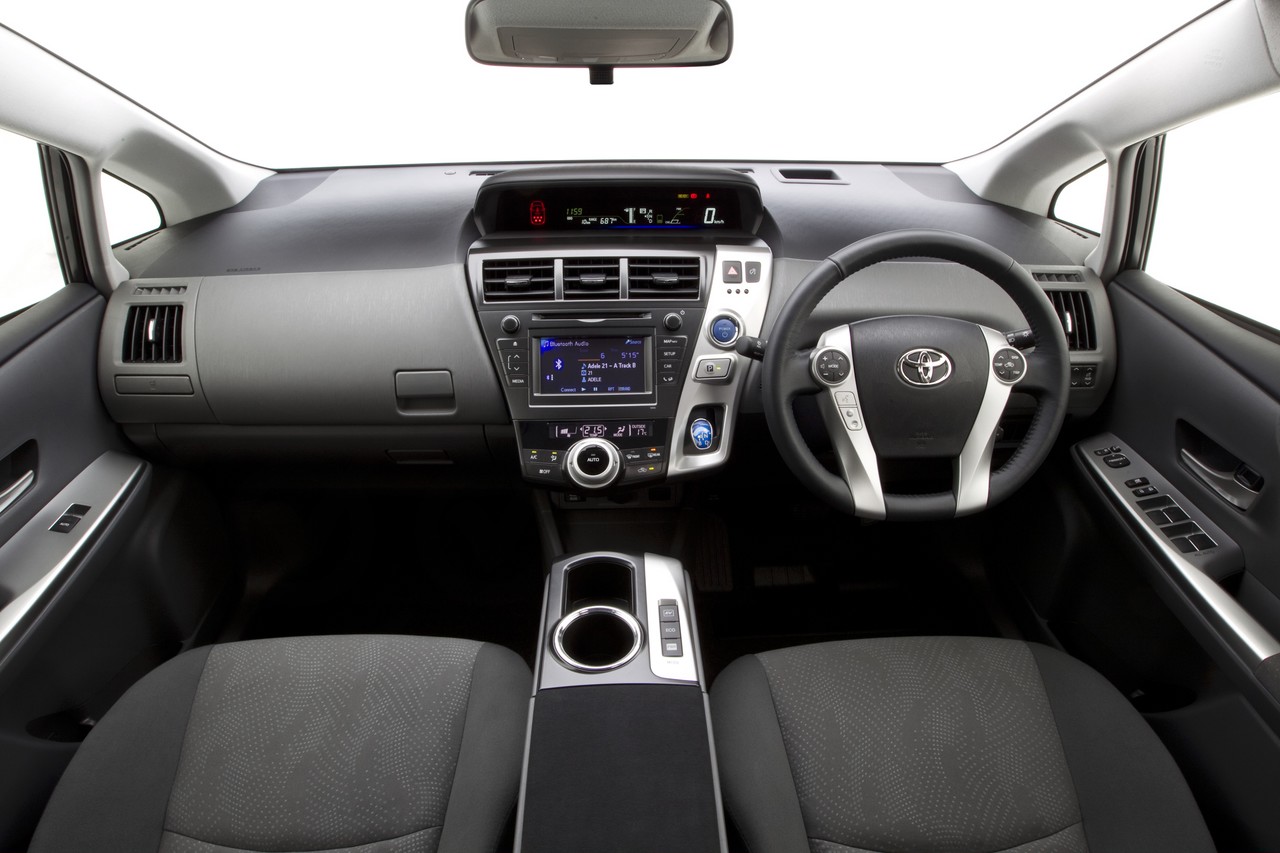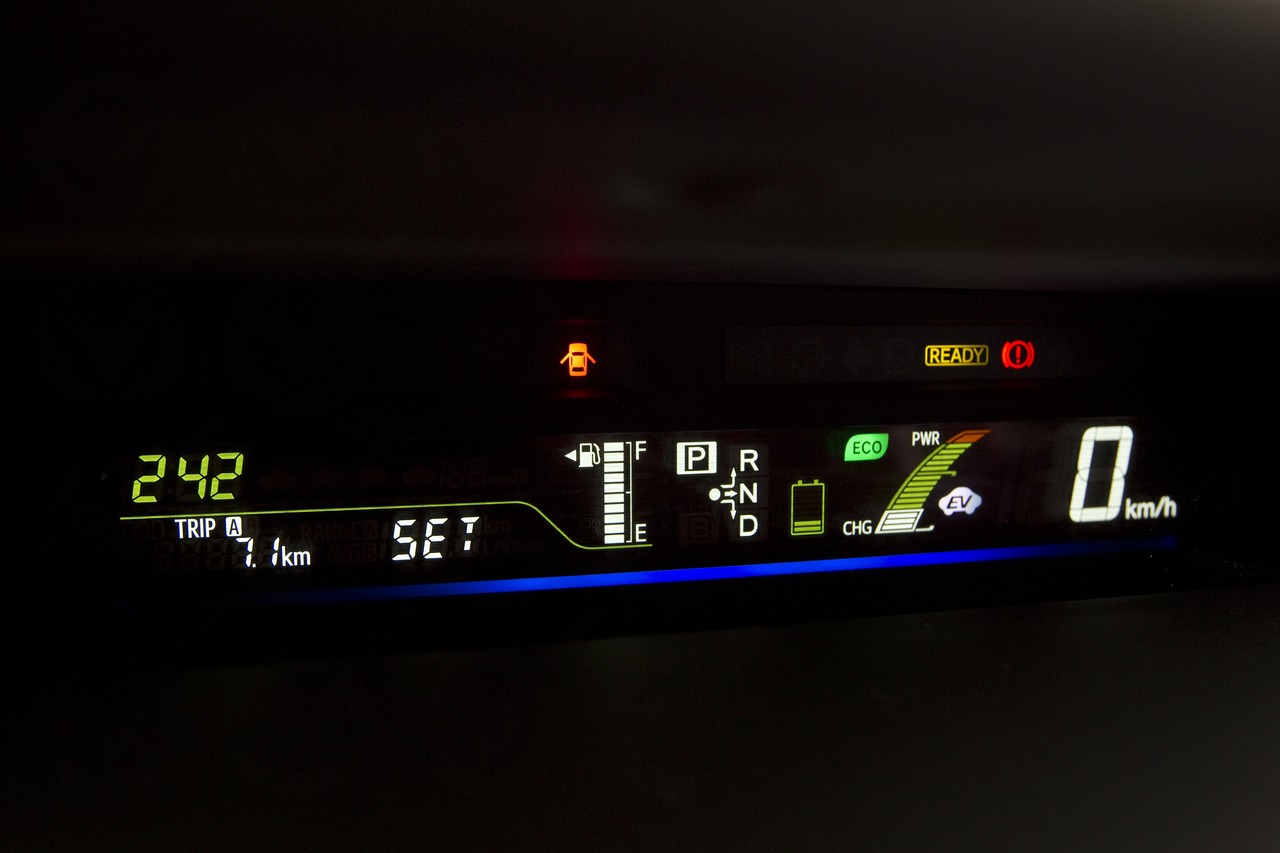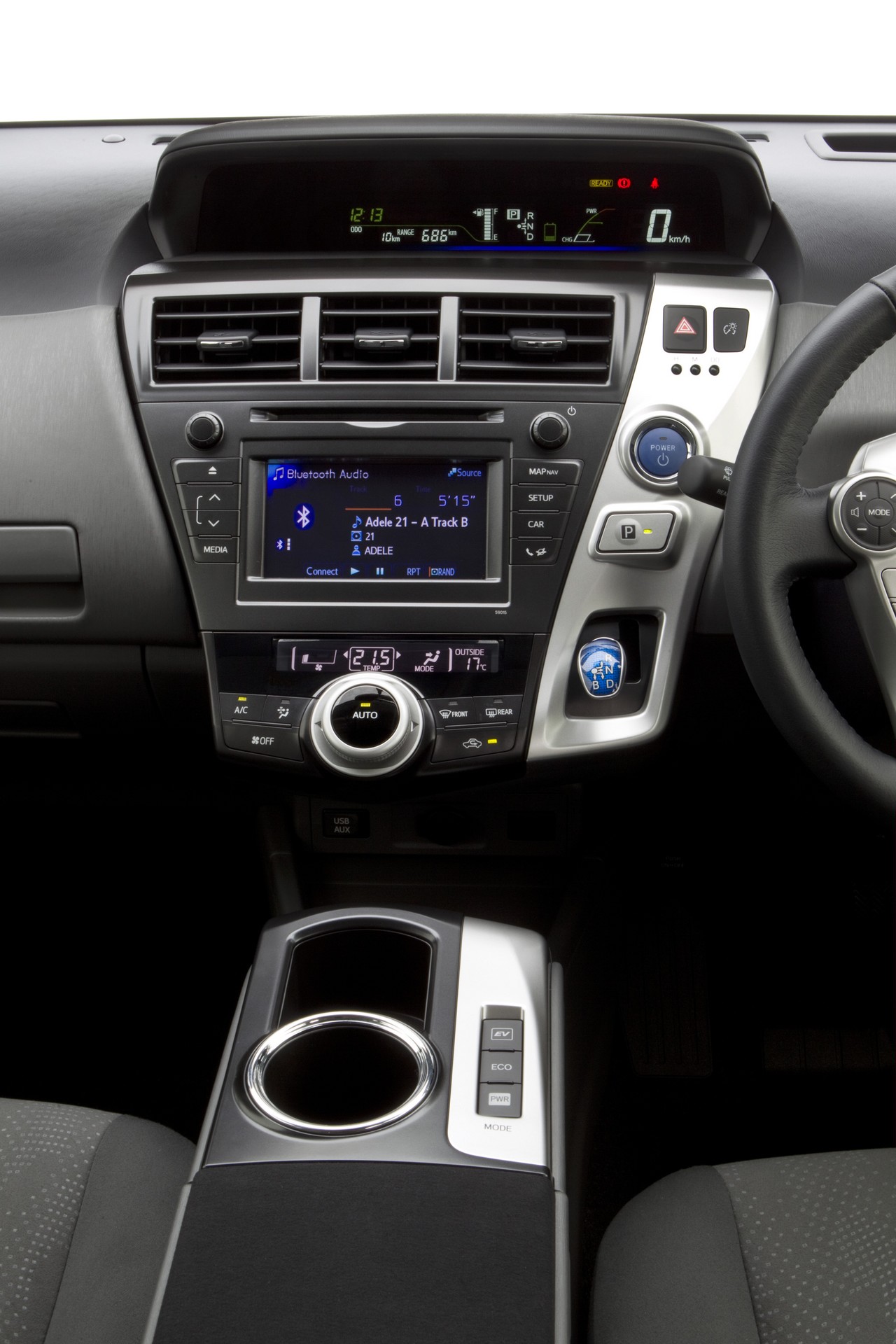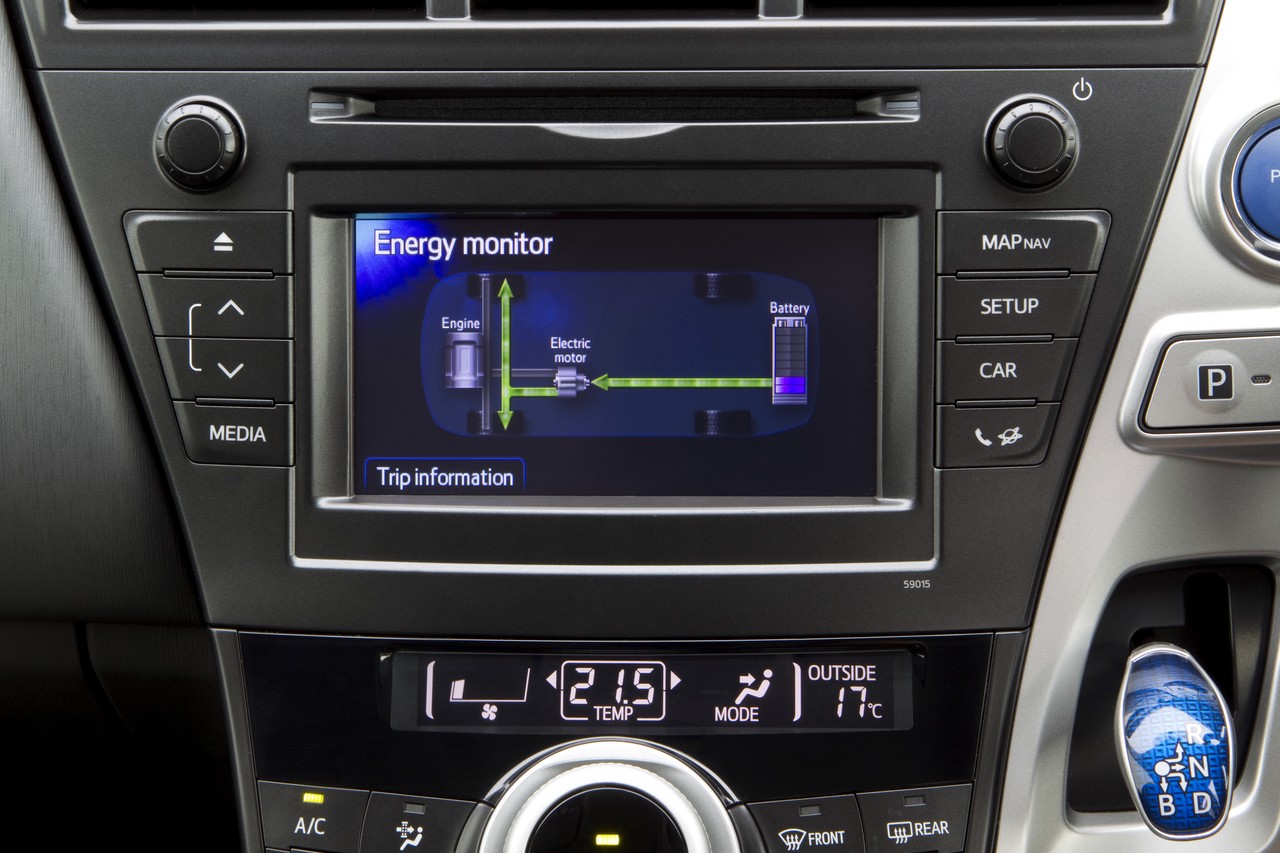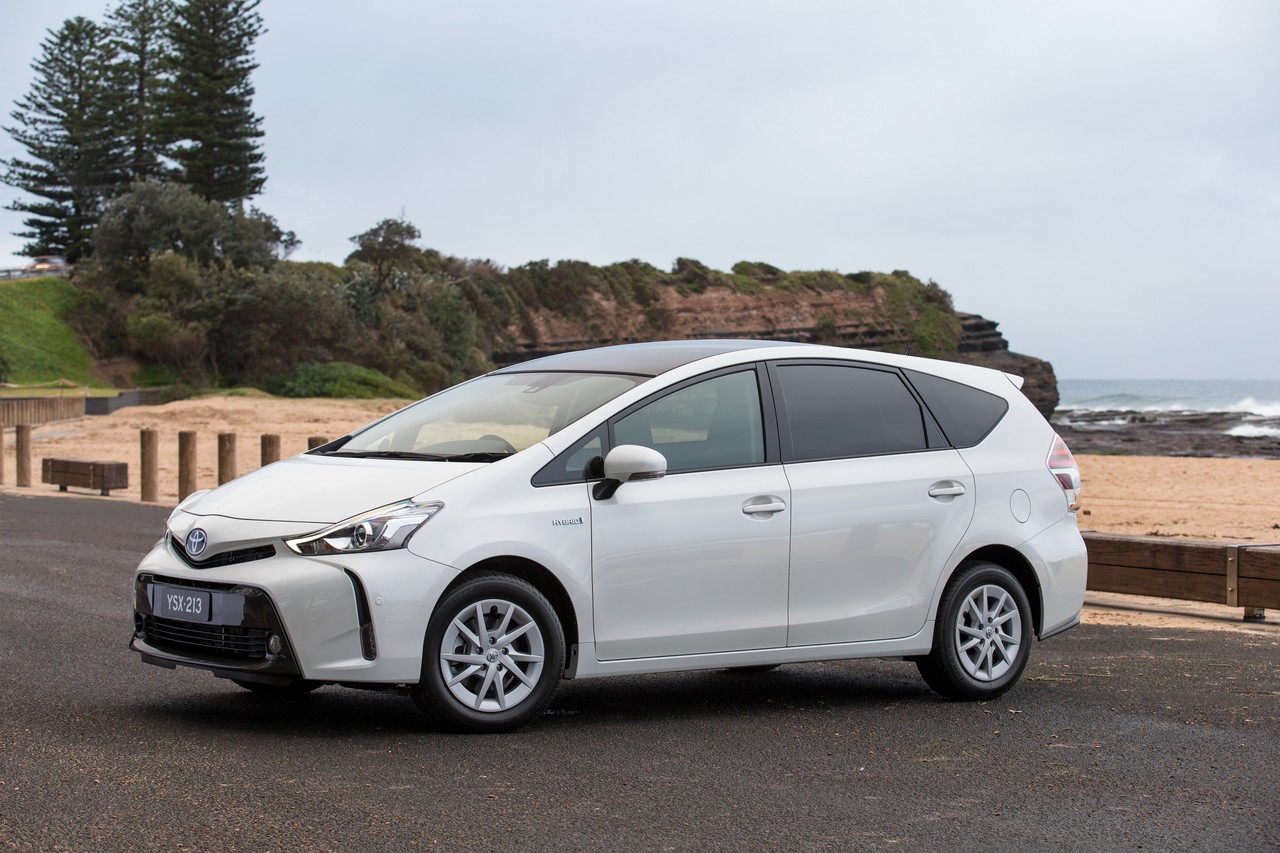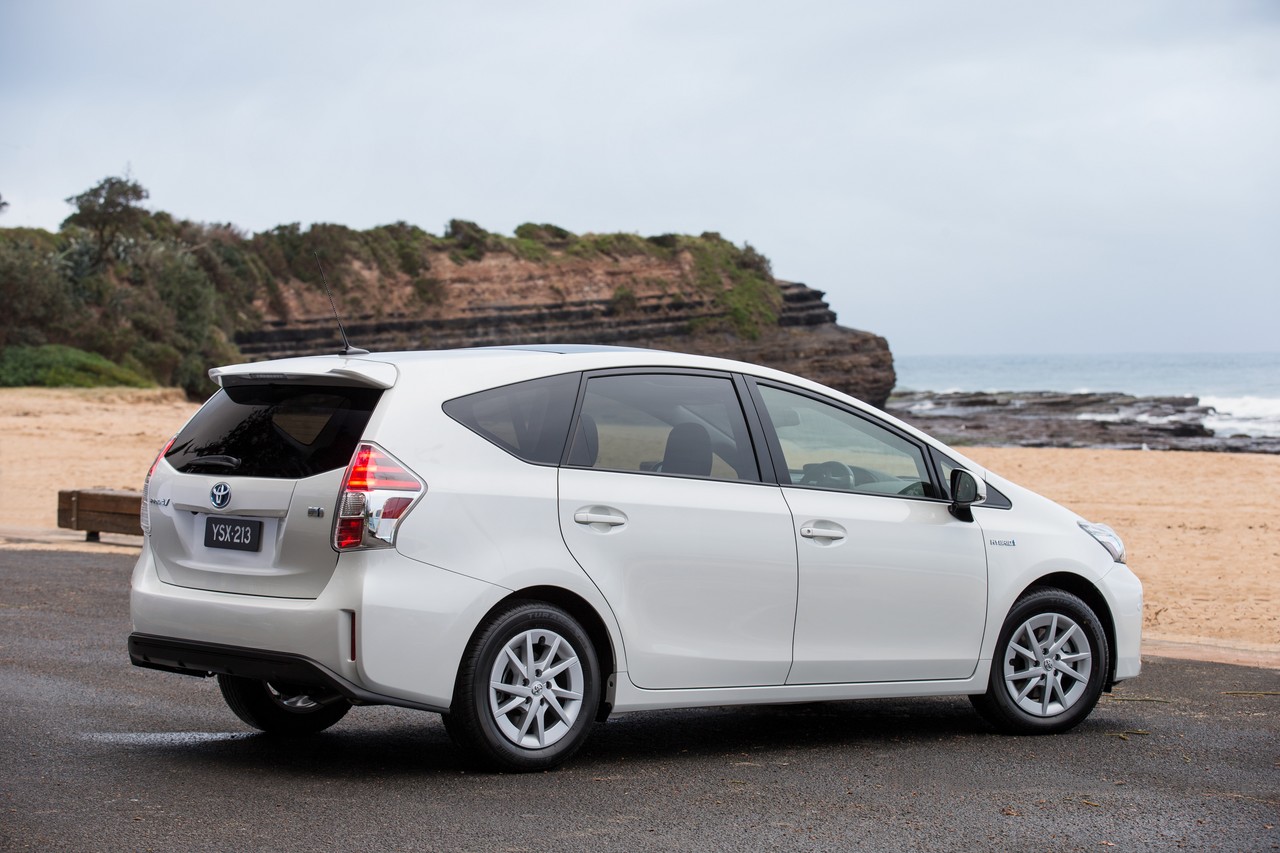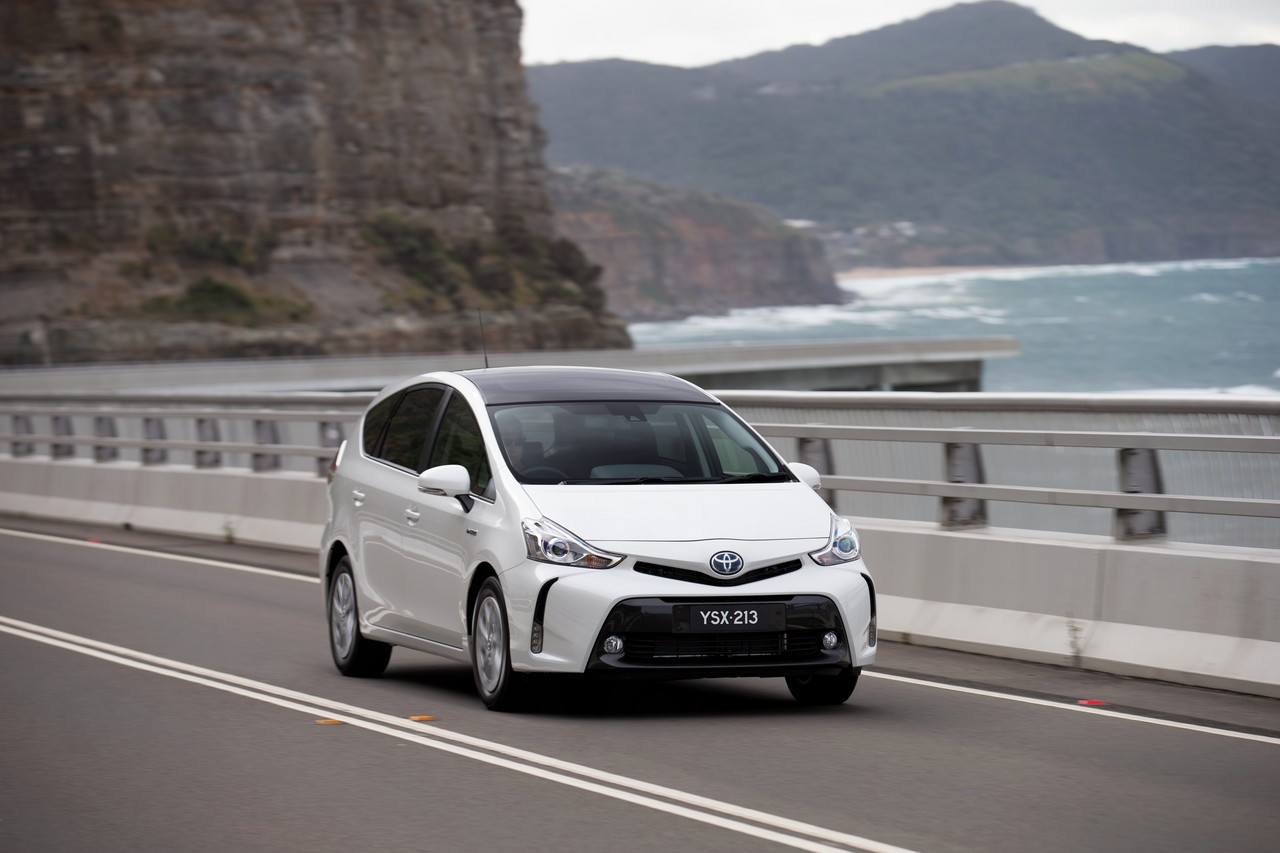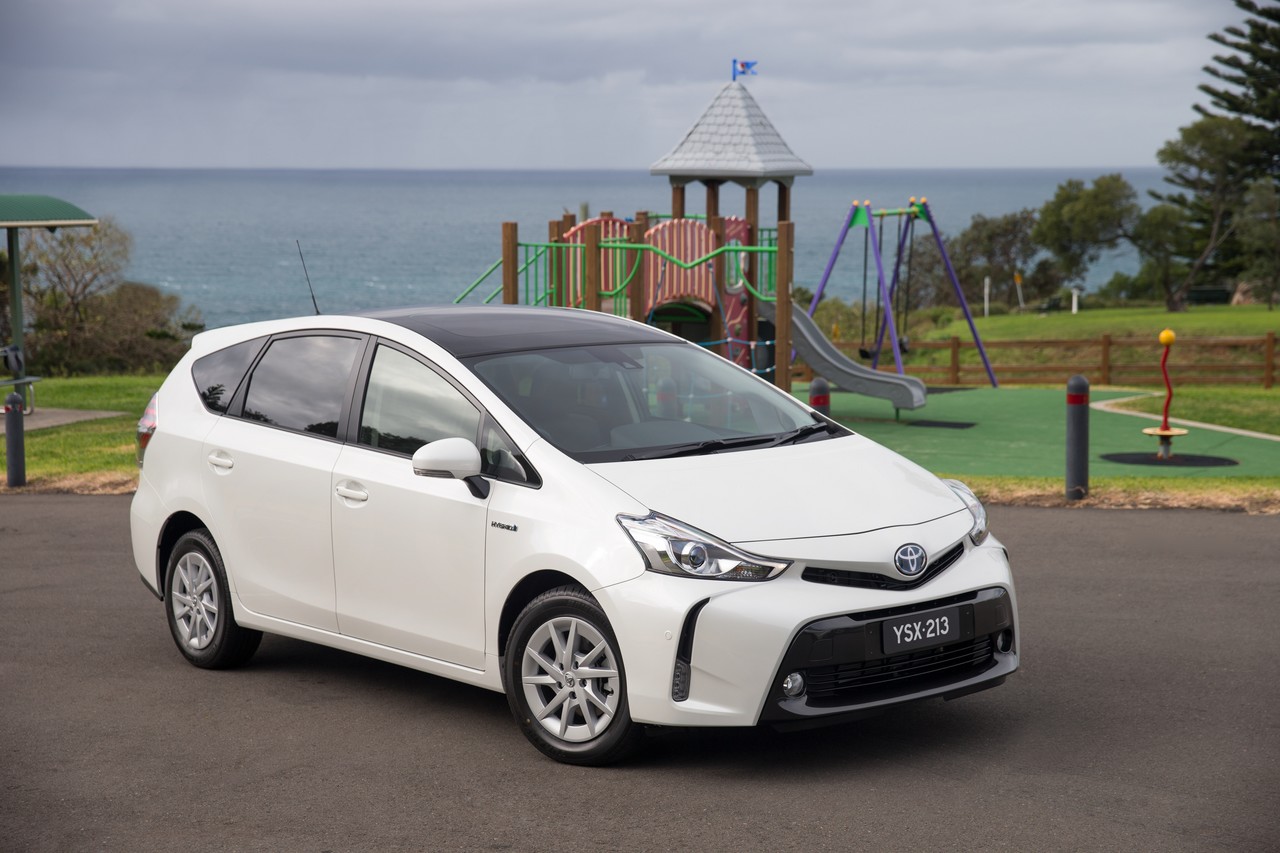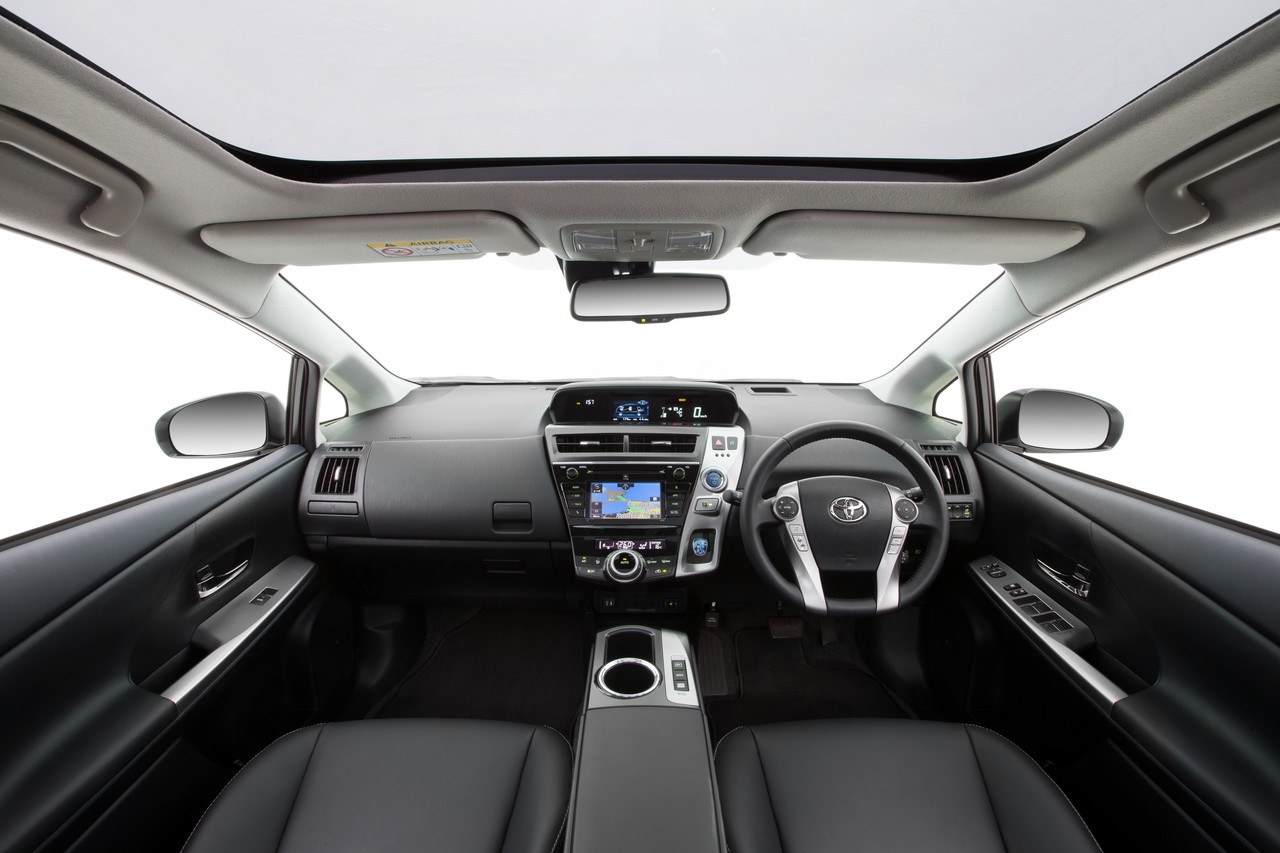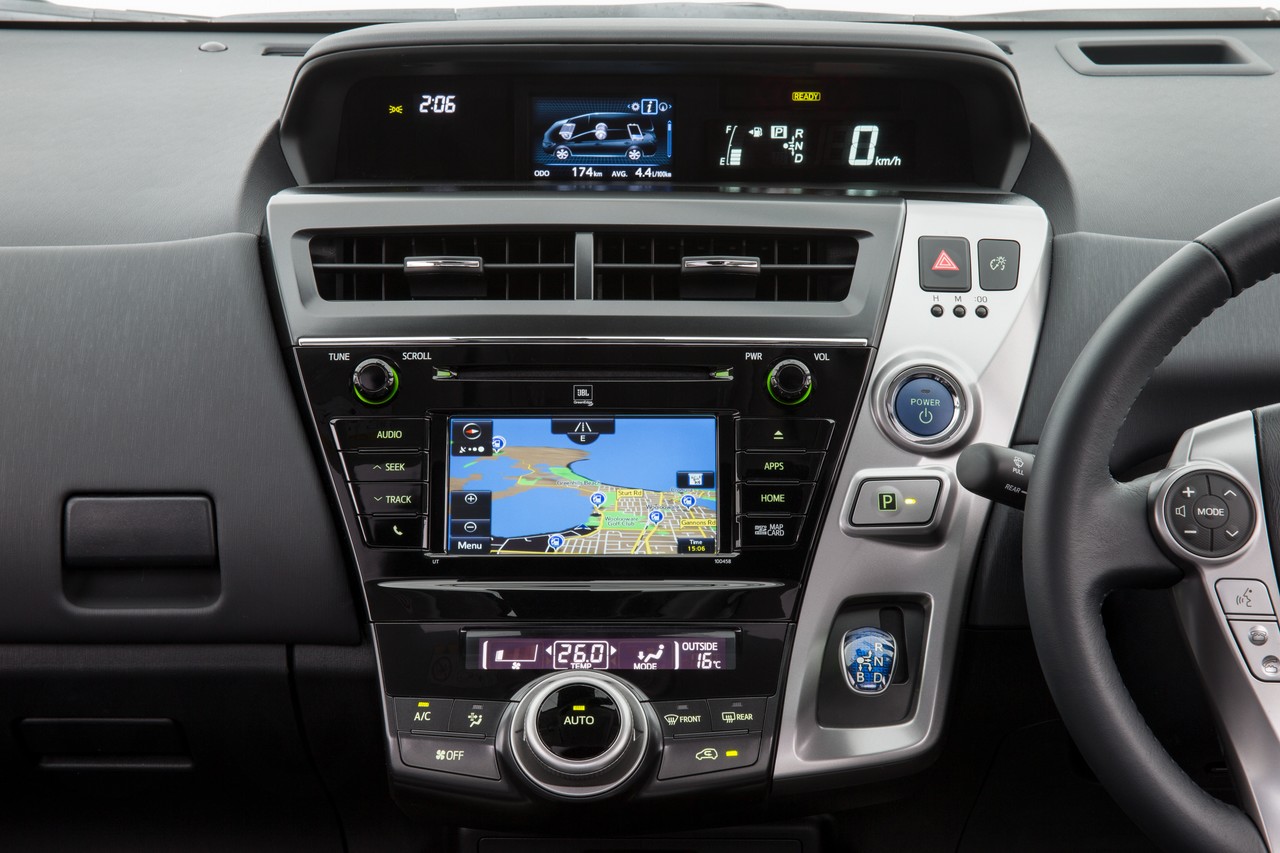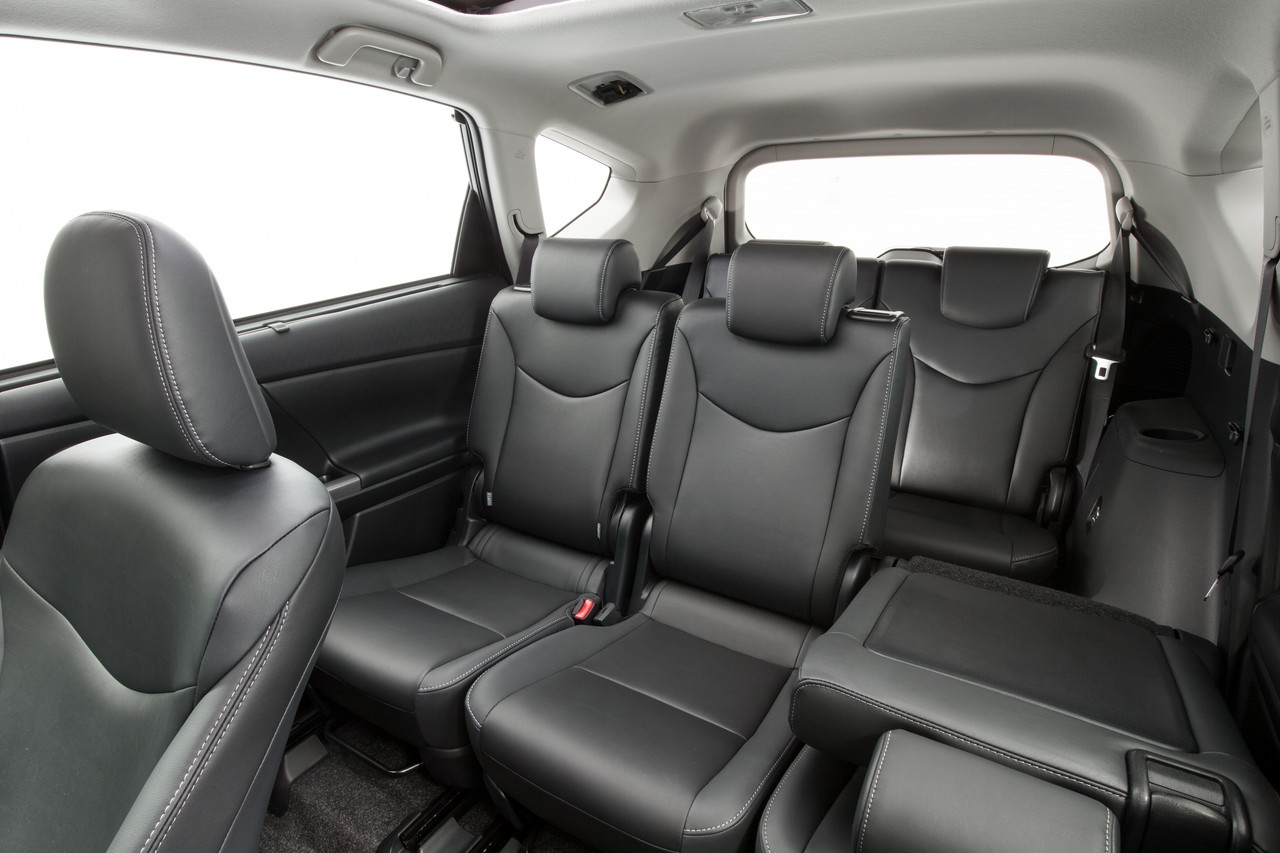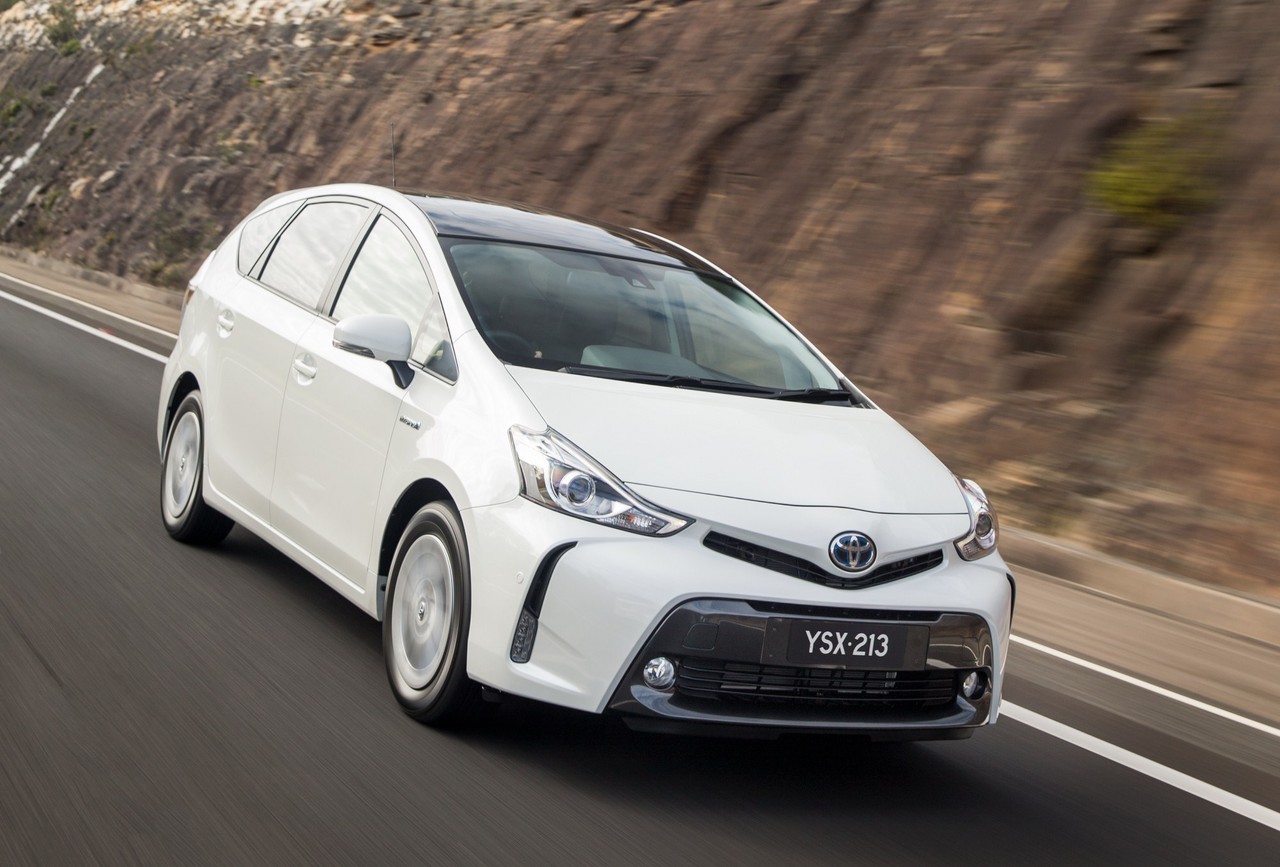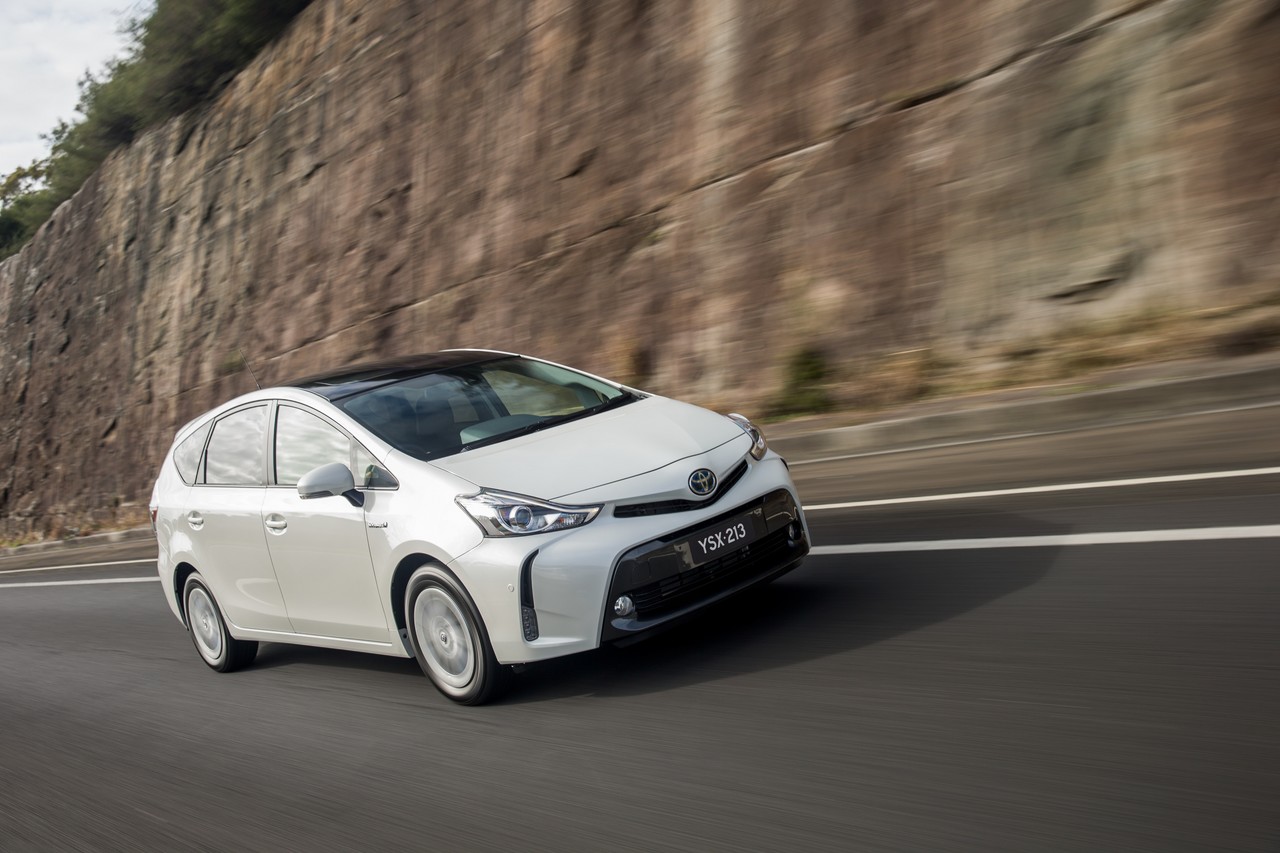
- Refined and economical hybrid powertrain
- Spacious and versatile interior (for the front two rows)
- Comfortable front seats
- Suspension lacks compliance
- Dull steering lacks feel
- Body roll when cornering
- Sensitive brake pedal
- Cramped third row seats
- Dull grey interior
Review: Toyota ZVW40.I Prius v (2012-14)
Overview
Released in May 2012, the Toyota ZVW40 Series I (ZVW40.I) Prius v was a seven-seat hybrid wagon. Manufactured in Japan, the Prius v (‘v’ for versatility) was powered by a 1.8-litre Atkinson cycle four-cylinder engine and an electric motor which drew power from lithium-ion batteries. Furthermore, power was directed to the front wheels via a continuously variable transmission. The Prius v range initially consisted of a single, unnamed variant, though an i-Tech variant was available from November 2012.
2ZR-FXE engine and electric motors
The 1.8-litre 2ZR-FXE four-cylinder petrol engine had an aluminium block and cylinder head, double overhead camshafts, four valves per cylinder, variable intake valve timing (Toyota’s ‘VVT-i’) and a compression ratio of 13.0:1. The Prius v also had two electric motors/generators, MG1 and MG2. Of these,
- the first electric motor acted primarily as a generator to store surplus power from the petrol engine in its battery; and,
- the second motor acted primarily as an electric drive motor, but also as a generator during regenerative braking.
Furthermore, the compound planetary gear set contained two sets of planetary gears. The first gear set acted as a power-split device to divide power from the petrol engine between the generator and the counter gear (and the front wheels). The second gear set, however, was a reduction gear for the 60 kW electric drive motor.
When stationary or coasting, the petrol engine would switch off and almost seamlessly restart when required. Energy not required for propulsion was converted to electricity and regenerative braking also enabled kinetic energy to be converted into electric energy; similarly, a gear lever enabled the driver to select ‘B’ for additional engine braking. The Prius featured four driving modes:
- Normal;
- ‘EV’ (electric vehicle) for electric power only for speeds below 50 km/h and for a range of up to 2 km;
- ‘Eco’ dampened throttle response and limited power consumption from the air conditioning system for maximum fuel efficiency; and,
- ‘Power’ provided greater throttle response.
The Prius v achieved fuel consumption over the ADR 82/01 combined cycle of 4.4 litres per 100 km.
Dimensions
Compared to the XW30 Prius hatchback, the Prius v had an 80 mm longer wheelbase (at 2780 mm), was 155 mm longer (4615 mm), 30 mm wider (1775 mm) and 100 mm taller (1590 mm); the Prius v also had over 50 per cent more interior cargo space. Inside, the Prius v had a 2-3-2 seating configuration with tiered seating. In the second row, there were three independent sliding, reclining and split-folding seats with fore/aft slide adjustment. Furthermore, the third row of seats had a 50:50 split and could be folded flat.
Suspension
The Prius v had MacPherson strut front suspension and semi-independent torsion beam rear suspension, both with coil springs and gas-filled dampers.
| Power source | Details | Trans. | Peak power | Peak torque | |
|---|---|---|---|---|---|
| Prius v, Prius v i-Tech |
Petrol engine | 1.8-litre Atkinson cycle petrol I4 (2ZR-FXE) | CVT | 73 kW at 5200 rpm | 142 Nm at 4000 rpm |
| 650 volt AC electric motor | Powered by 201.6 volt lithium-ion battery | 60 kW | 207 Nm | ||
| Combined | 100 kW | N/A |
Safety equipment
Standard safety equipment for the Prius v included dual front airbags, a driver’s knee airbag, front side airbags, full-length curtain airbags, ABS, electronic brake force distribution, brake assist, electronic stability control, traction control and front seatbelts with pretensioners and load limiters. The brake lights of the Prius v would also flash to provide an emergency signal which when the vehicle speed was initially greater than 55 km/h and significant deceleration was detected.
The Prius v i-Tech was further equipped with:
- Dynamic radar cruise control: using radar and other sensors, dynamic cruise control would maintain a selected distance from the vehicle travelling ahead by reducing power, braking and accelerating as required. If additional braking was required, the driver would be alerted by an alarm; and,
- A pre-crash safety system: if a collision was anticipated, the pre-crash safety system would alert the driver, pre-tension the front seatbelts and provide additional braking assistance. Furthermore, if the Prius v was travelling at 15 km/h or greater and the pre-crash system detected a speed difference of at least 15 km/h with the vehicle ahead, the pre-crash system would autonomously brake the vehicle if a collision was considered unavoidable.
Brakes
The Prius v had 296 mm by 28 mm ventilated front brake discs and 290 mm by 12 mm solid rear discs.
ANCAP testing
In ANCAP crash testing , the Prius v received a five star adult occupant protection rating with a score of 35.48 out of 37. In the frontal offset crash test, protection of the driver’s head, thighs and feet were rated as good, though chest and lower leg protection were rated as acceptable (i.e. a slight risk of serious injury). In the side impact test, protection of the driver was generally rated as good, though chest protection was rated as acceptable.
Features: Prius v
Standard features for the Prius v included 16-inch alloy wheels, a six speaker stereo with CD player, MP3-compatiblity, Bluetooth mobile phone connectivity and audio streaming, auxiliary inputs (USB/iPod) and a 6.1-inch display, climate control air conditioning, a power adjustable driver’s seat, cruise control, a head-up display (HUD), front and rear fog lights, LED daytime running lights, automatic headlights, a reversing camera, remote central locking with proximity key (for keyless entry), power windows, power adjustable mirrors with heating and power folding functions, tilt and telescopic steering column adjustment, rear privacy glass, push-button start, a 12 volt power outlet, trip computer and immobiliser.
Features: Prius v i-Tech
The Prius v i-Tech was further equipped with an eight speaker JBL sound system with digital radio (DAB+), satellite navigation, head-up display (including navigation prompts), heated front seats, premium seat coverings, LED projector headlights with washers, a panoramic roof with a power-operated sunshade, an electrochromatic rear view mirror and Toyota’s ‘Intelligent Park Assist’ (IPA). The Intelligent Park Assist system used a camera and ultrasonic sensors to identify parking spaces and to calculate the steering angle required to steer the vehicle into parallel and 90-degree reverse parks. When parking, the driver would only need to control vehicle speed by applying the brake pedal.
March 2014 update
In March 2014, a running change was introduced which improved sound absorption through the floor and rear deck.
Brochure
Related links
Review: Toyota ZVW40.II Prius v (2015-17)
Overview
Released in Australia in June 2015, the ZVW40 Series II (ZVW40.II) Prius v introduced updated styling, upgraded interiors and new features. Furthermore, the suspension was revised to reduce road-shock from bumps, improve ride comfort and increase handling stability. Specifically,
- The new front and rear dampers had increased base-valve rigidity and revised damping-force characteristics in the mid and high damper-velocity range; and,
- The trailing arm bushes had improved spring characteristics and the direction of compression was altered.
The ZVW40.II Prius v could be identified by its new upper grille, a trapezoidal gloss black lower grille, more prominent Toyota badge which extended the forward line of the bonnet, slim profile headlights and vertical LED daytime running lights. At the rear, there was a new combination lamp design for tail-lights, new licence-plate trim and rear bumper with integrated diffuser.
Inside, the Prius v had new interior trim, upgraded audio systems, a revised instrument binnacle (with the speedometer, gearshift indicator and fuel gauge positioned closer to the driver) and a 4.2-inch colour TFT multi-information display (MID) which was controlled via steering wheel switches.
For the ZVW40.II Prius v, the MID had an ‘eco judge’ function which provided a score for the fuel efficiency of the driver. In the Prius v i-Tech, the MID included distance settings for the adaptive cruise control and indicators for the automatic high beam, lane departure alert and pre-collision safety system.
| Power source | Details | Trans. | Peak power | Peak torque | |
|---|---|---|---|---|---|
| Prius v, Prius v i-Tech |
Petrol engine | 1.8-litre Atkinson cycle petrol I4 (2ZR-FXE) |
CVT | 73 kW at 5200 rpm | 142 Nm at 4000 rpm |
| 650 volt AC electric motor | Powered by 201.6 volt lithium-ion battery | 60 kW | 207 Nm | ||
| Combined | 100 kW | N/A |
Safety equipment
For the ZVW40.II Prius v, standard safety equipment was extended to include a lane departure alert (LDA) which used a windscreen-mounted camera to monitor the vehicle’s position on the road and would warn the driver – via a buzzer and message on the MID – if the vehicle was about to move cross lane markings without having activated the indicator signals.
For existing safety equipment, the following items were upgraded:
- Hill-start assist control (HAC): activated automatically when the system detected that the vehicle was stationary on a hill. As such, the driver no longer needed to depress the brake pedal to activate the system;
- Adaptive cruise control (ACC, Prius v i-Tech only): upgraded with a vehicle-approaching warning – displayed on the MID screen – to notify the driver if another vehicle was nearby when radar cruise control was active; and,
- Pre-collision safety system (PCS, Prius v i-Tech only): upgraded with a brake warning to the driver if the PCS control computer detected a potential collision.
Features: Prius v
Compared to its ZVW40.I predecessor, standard features for the ZVW40.II Prius v were extended to include new halogen headlights.
The Prius v i-Tech gained leather seats, heated front seats, bi-LED headlights and the ‘Toyota Link’ connectivity system which, when connected to a compatible smartphone, provided access to apps that could help the driver find a destination, weather information and roadside assistance.
Related links
- Toyota Pressroom: Prius v – Improved Safety, Style and Driving Pleasure (June 2015)
- Toyota Australia: Toyota Prius v
- Wikipedia.org: Toyota ZVW40 Prius v
